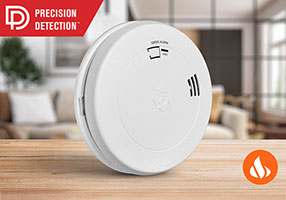Lead Test Kits FAQ
What precautions should I take when I perform a lead test?
Perform all testing in a well-ventilated area, even outdoors if possible. Try and avoid contact with the indicator solution and wash hands with soap and water after handling items which have been tested positive for lead.
What is the difference between the Rapid Method and Patented Leach Method in lead testing?
Use the Rapid Method to quickly test for surface lead on painted surfaces, dishes, fine china, pottery, ceramic ware, mini-blinds, circuit boards, toys, bathtub glazes, antiques, food can seams, plumbing fixtures, solder, lead foil, and ceramic tile. Use the Patented Leach Method for the sensitive testing of multi-layered or dark colored paint/paint chips, soil, dust samples, dishes, pottery, ceramic ware, fine china, jewelry, candle wicks, and any other materials.
I tested positive for lead with the kit but when I brought in a professional no lead was detected. How could this be?
This test is not intended to replace a professional inspection by an accredited commercial laboratory. The lead test kit will detect high levels that exceed government guidelines but no guarantees are intended or implied.
Other toxic metals can give a positive response. If copper or bismuth is present, it is indistinguishable from lead in this test. This is of little concern as these elements are not usually present in the items that can be tested with the kit. If the items were properly manufactured, they would not release these toxic metals in amounts that would give a positive response using this testing procedure
Lead Poisoning:
Exposure to lead in the home or in the environment can result to lead poisoning. Although some lead-based products still exist it is no longer used in paints, gasoline and other products. Additionally, lead can remain in the environment for years. Children are the most at risk to the effects of lead poisoning because it can accumulate in their nervous system as they grow. Lead poisoning is rarely fatal, but can cause significant problems in brain development. Detection and removal from lead in pipes, paint and dust is the best way to limit the harmful effects of lead.
Lead Poisoning signs and symptoms in children:
- Irritability
- Loss of appetite
- Weight Loss
- Tiredness
- Stomach Pain
- Vomiting
- Constipation
- Paleness from anemia
- Learning difficulties
Lead Poisoning signs and symptoms in adults:
- Pain, numbness or tingling in legs and arms
- Weakness in the muscles
- Headaches
- Stomach Pain
- Loss of Memory
- Mood Disorders (mainly female)
- Reduced sperm count or abnormal sperm (not female)



